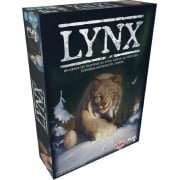Fentasy Games
- Grid display
- List display
-
PreorderAvail. Juin
59,90 €
In El Burro, you are developing a farm in Majorca and have to move your goods from your farm to the port of Palma.
- French
- From 14 years old
- 2 to 4 player(s)
- 2 to 3h
59,90 €
Vendu par Philibert
-
PreorderAvail. fin juillet
34,95 €
Dans Lynx, chaque joueur incarne un trappeur autochtone des Premières Nations du nord du Canada à la fin du XVIIIe siècle, dans la région de la baie d’Hudson, au nord de l’Ontar...
- French
- From 14 years old
- 2 to 5 player(s)
- 30mn to 1h
34,95 €
Vendu par Philibert
-
40,02 €
Below the mills of Oranienburg conditions for shipping were difficult, so an artificial branch of the Havel River was created. It cut the older Ruppiner Canal, and the four way ...
- English
- From 14 years old
- 1 to 2 player(s)
- 1 to 2h
40,02 €
Vendu par Fentasy Games
Copyright © 2025 www.philibertnet.com Legals - Privacy Policy - Cookie Preferences - Sitemap






